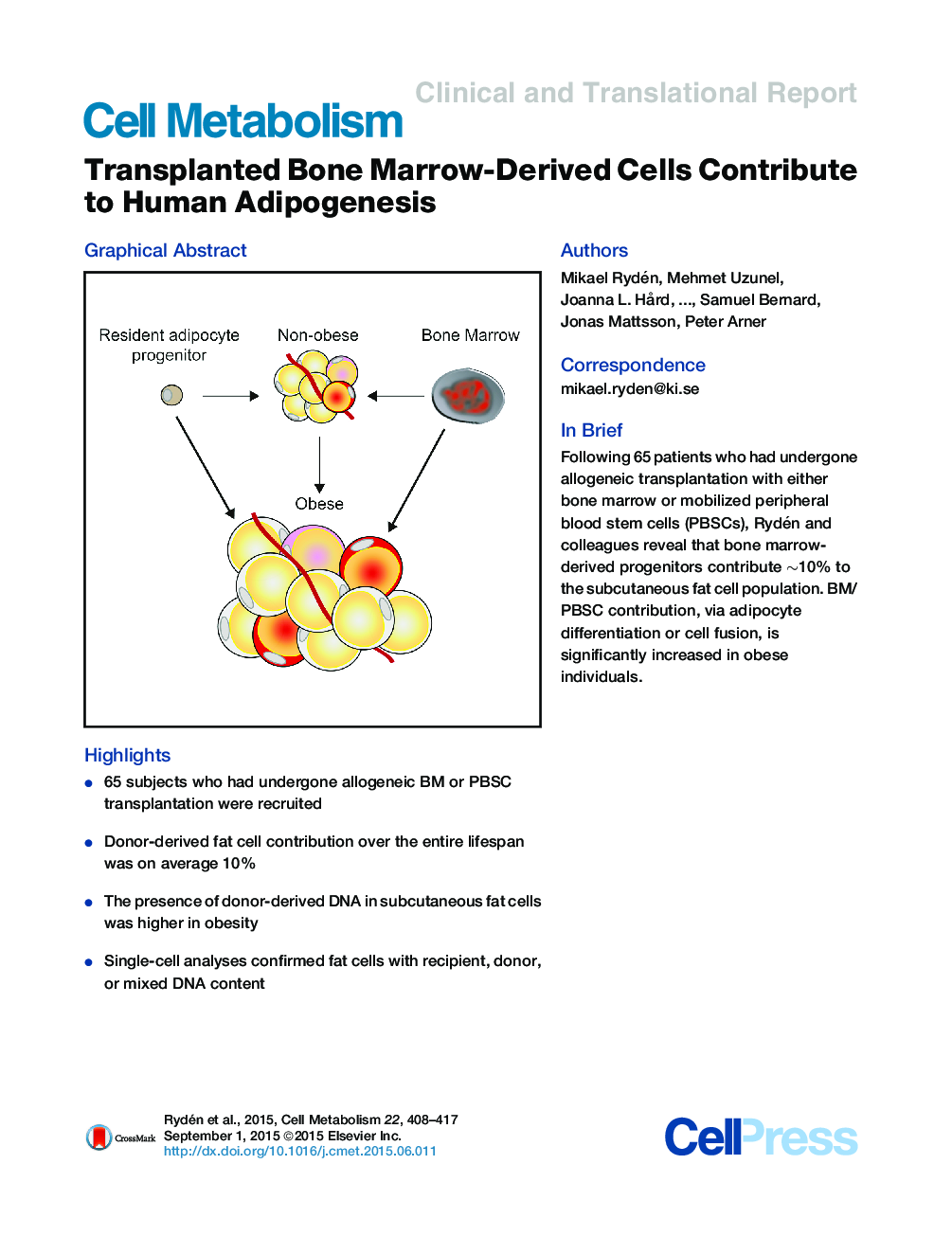| Article ID | Journal | Published Year | Pages | File Type |
|---|---|---|---|---|
| 2792460 | Cell Metabolism | 2015 | 10 Pages |
•65 subjects who had undergone allogeneic BM or PBSC transplantation were recruited•Donor-derived fat cell contribution over the entire lifespan was on average 10%•The presence of donor-derived DNA in subcutaneous fat cells was higher in obesity•Single-cell analyses confirmed fat cells with recipient, donor, or mixed DNA content
SummaryBecause human white adipocytes display a high turnover throughout adulthood, a continuous supply of precursor cells is required to maintain adipogenesis. Bone marrow (BM)-derived progenitor cells may contribute to mammalian adipogenesis; however, results in animal models are conflicting. Here we demonstrate in 65 subjects who underwent allogeneic BM or peripheral blood stem cell (PBSC) transplantation that, over the entire lifespan, BM/PBSC-derived progenitor cells contribute ∼10% to the subcutaneous adipocyte population. While this is independent of gender, age, and different transplantation-related parameters, body fat mass exerts a strong influence, with up to 2.5-fold increased donor cell contribution in obese individuals. Exome and whole-genome sequencing of single adipocytes suggests that BM/PBSC-derived progenitors contribute to adipose tissue via both differentiation and cell fusion. Thus, at least in the setting of transplantation, BM serves as a reservoir for adipocyte progenitors, particularly in obese subjects.
Graphical AbstractFigure optionsDownload full-size imageDownload high-quality image (179 K)Download as PowerPoint slide
